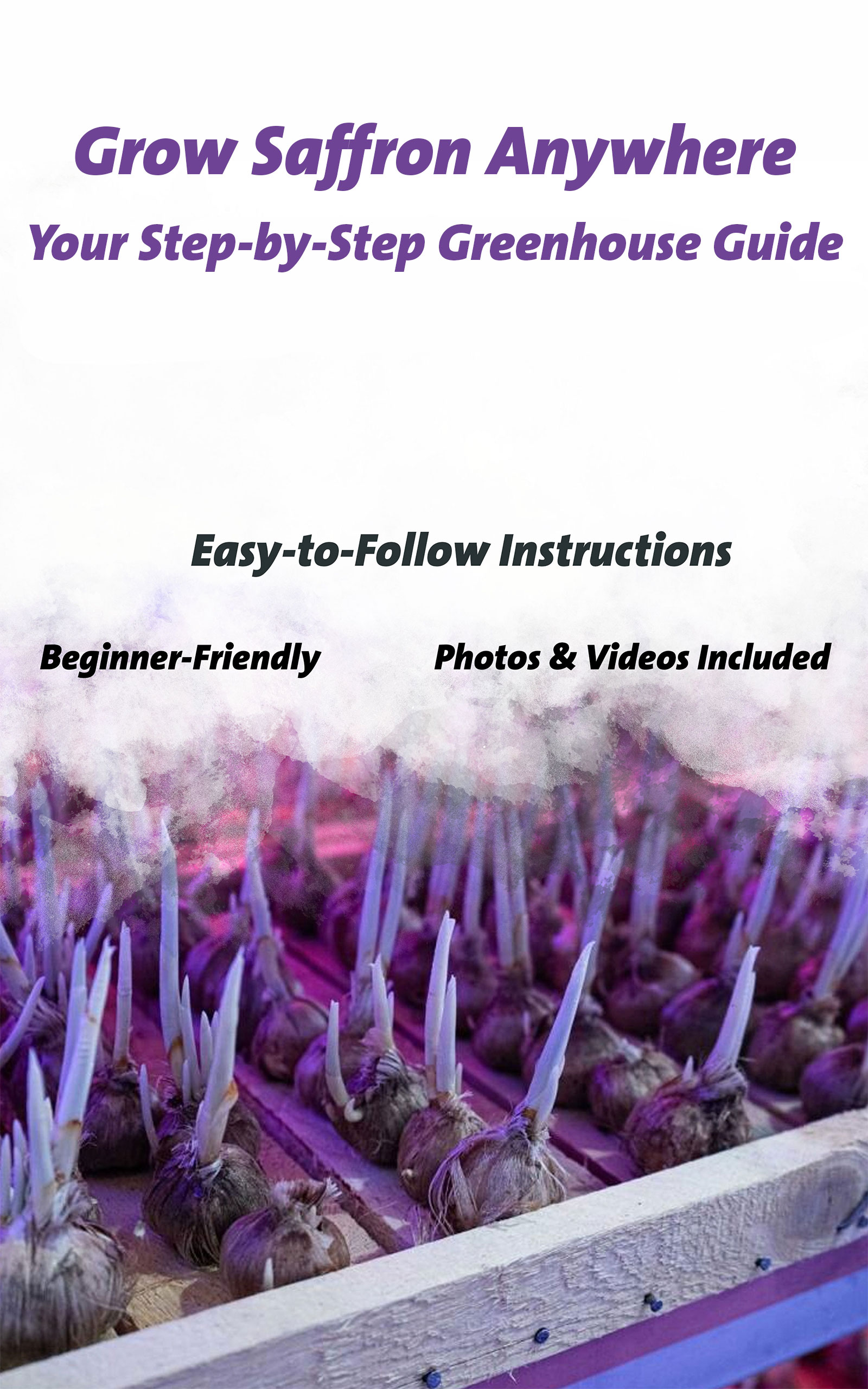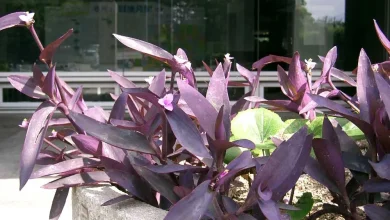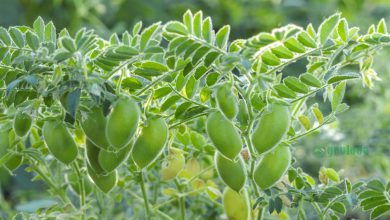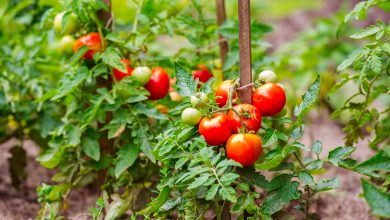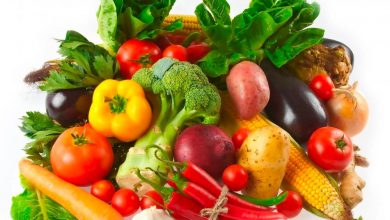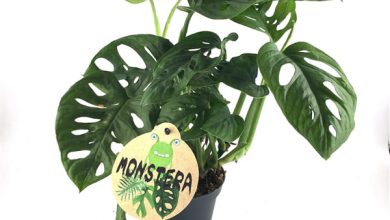Common Indoor Saffron Farming Problems and Solutions – Golden Secrets
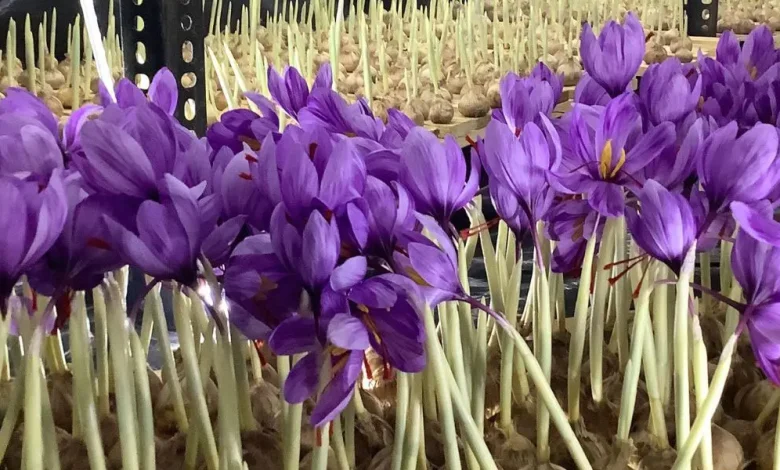
Unveiling the Golden Secrets
Saffron, the “king of spices,” is renowned for its intoxicating aroma, vibrant crimson threads, and unparalleled flavor. Traditionally cultivated in open fields with specific climatic requirements, saffron production has historically been a labor-intensive and geographically limited process. However, the future of saffron farming is blooming indoors, fueled by advancements like aeroponics and LED lighting. Yet, even within the controlled environment of an indoor farm, challenges arise. This article delves into the common problems encountered in indoor saffron cultivation and equips you with effective solutions to ensure a flourishing harvest.
Optimizing the Golden Environment: Temperature Control
Temperature plays a crucial role in saffron crocus growth. Here’s how to ensure optimal conditions:
- Ideal Range: Maintain a daytime temperature between 15°C (59°F) and 18°C (64°F). Nighttime temperatures shouldn’t dip below 12°C (54°F).
- Problem: Temperatures exceeding 24°C (75°F) can hinder flower production and reduce saffron yield. Conversely, temperatures below the ideal range can slow down growth and development.
- Solution: Utilize high-precision temperature control systems within your indoor farm. Air conditioning units can be used during hot periods, while strategically placed heaters can maintain warmth during cooler nights. Opt for LED lighting that generates minimal heat, further aiding temperature regulation.
Pollination Power: Strategies for Indoor Saffron Cultivation
Unlike outdoors where wind and insects facilitate pollination, indoor saffron farming requires a more deliberate approach:
- Natural Pollination: If using a large-scale system with open space, you can introduce bumblebees for natural pollination. However, managing beehives indoors requires additional expertise and considerations.
- Hand Pollination: This is the most common method for indoor saffron farms. Using a fine brush or cotton swab, gently transfer pollen from the anthers (male parts) of the saffron flower to the stigmas (female parts). This requires meticulous attention to detail and can be time-consuming for larger saffron crocus populations.
- Electrostatic Pollination: This innovative technique utilizes an electrostatic field to transfer pollen grains to the stigmas. While still under development for commercial applications, it holds promise for efficient and large-scale indoor pollination.
Defending Your Golden Harvest: Pest Management in Indoor Farms
While indoor environments offer protection from some outdoor pests, vigilance is still crucial:
- Common Indoor Pests: Thrips, fungus gnats, and spider mites are potential threats to indoor saffron crops.
- Organic Methods: Introduce beneficial insects like ladybugs or lacewings to prey on these pests naturally. Utilize neem oil or insecticidal soap sprays as organic control measures if necessary.
- Maintaining Hygiene: Regularly clean your grow room and tools to prevent pest outbreaks. Remove any diseased plant material promptly to prevent the spread of pathogens.
Optimizing Irrigation and Nutrient Delivery:
Saffron thrives under specific moisture conditions. Here’s how to ensure proper irrigation and nutrient delivery in your aeroponic system:
- Precise Control: Unlike traditional soil-based methods, aeroponic systems allow for precise control over nutrient delivery and misting frequency.
- Nutrient Balance: Ensure your nutrient solution contains the optimal balance of macro and micronutrients essential for saffron growth. Regularly monitor and adjust the pH level of the solution for optimal nutrient uptake.
- Misting Frequency: Maintain a consistent misting schedule that provides sufficient moisture for the saffron crocus roots without causing waterlogging.
Maximizing Saffron Quality: Light Matters
LED lighting plays a vital role in mimicking natural sunlight and influencing saffron quality:
- Spectrum Selection: Utilize LEDs that emit specific wavelengths of light beneficial for saffron growth. Research suggests that blue and red light spectrums can enhance crocin production, the compound responsible for saffron’s vibrant color and potent flavor.
- Light Intensity: Maintain optimal light intensity levels throughout the growth cycle. Insufficient light can lead to stunted growth, while excessive light exposure can damage saffron flowers. Light meters can be used to ensure proper light levels.
- Light Cycles: Simulate the natural day-night cycle of saffron-growing regions by providing a specific number of daylight hours followed by a period of darkness. This can influence flower production and overall plant health.
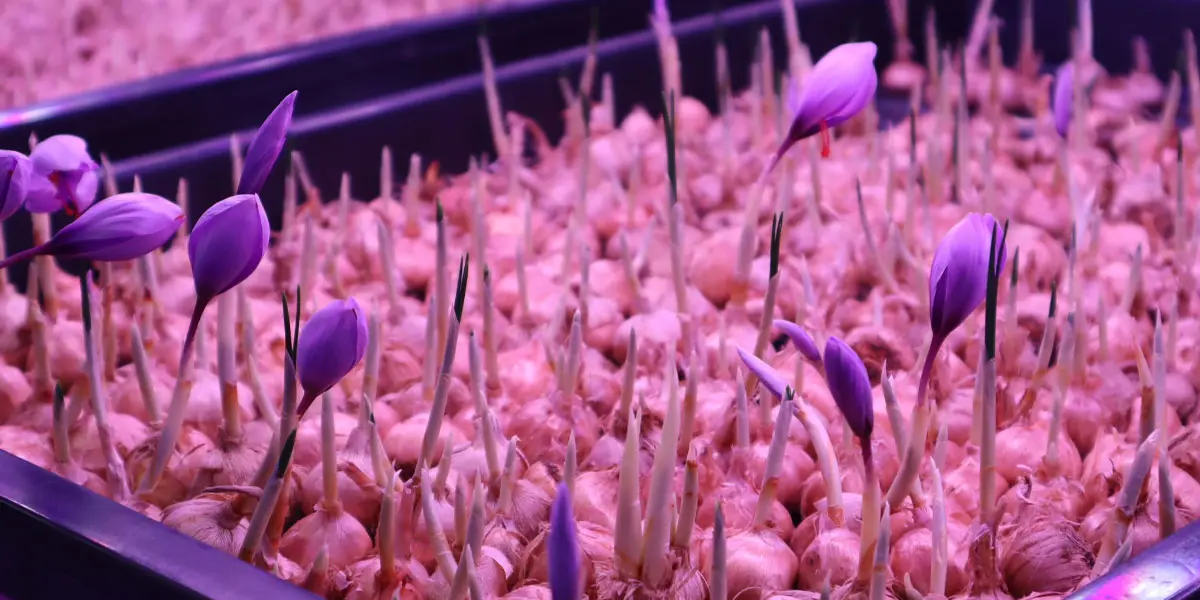
Beyond the Basics: Advanced Considerations for Indoor Saffron Farming
As you gain experience, consider these advanced techniques to further optimize your indoor saffron farm:
- Monitoring Systems: Invest in sensors and monitoring systems to track temperature, humidity, light intensity, and nutrient levels within your grow room. Real-time data allows for proactive adjustments and ensures optimal growing conditions.
- Strain Selection: Research and select saffron crocus varieties specifically suited for indoor cultivation. Some varieties may have shorter growth cycles or higher flower yields in controlled environments.
Continuous Learning: Embracing Innovation in Indoor Saffron Farming
The field of indoor saffron cultivation is constantly evolving. Here’s how to stay ahead of the curve:
- Connect with the Indoor Saffron Community: Join online forums, attend industry conferences, and network with other indoor saffron growers. Sharing experiences and knowledge can be invaluable for troubleshooting challenges and discovering new best practices.
- Stay Updated on Research: Regularly review research papers and articles related to indoor saffron cultivation. This will keep you informed about the latest advancements in technology, such as improved LED lighting spectrums or more efficient aeroponic systems.
- Explore Automation Opportunities: As technology progresses, consider incorporating automation into your indoor saffron farm. Automated systems can handle tasks like nutrient delivery, misting, and environmental control, freeing up your time and potentially increasing efficiency.
The Golden Future of Indoor Saffron Farming
By addressing these common challenges and implementing effective solutions, you can ensure a flourishing indoor saffron harvest. Remember, the key lies in creating a meticulously controlled environment that mimics the ideal conditions for saffron crocus growth. As you gain experience and embrace innovation, you’ll contribute to shaping the future of this sustainable and rewarding agricultural practice.
